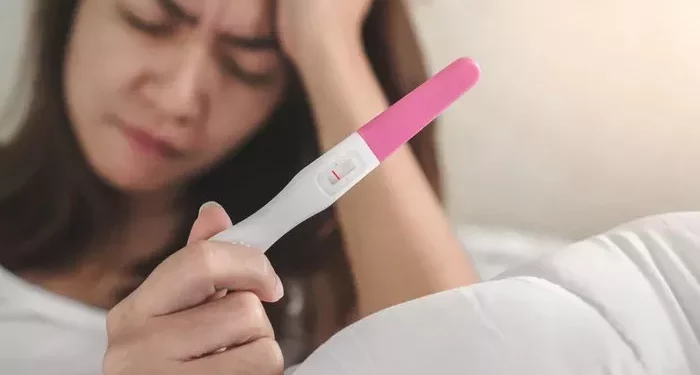Ovulation is a crucial process for those trying to conceive. Knowing the best time to test for ovulation can significantly increase the chances of pregnancy. This article will guide you through the fundamentals of ovulation, the methods available for testing, and the optimal timing for each method.
What is Ovulation?
Ovulation is the release of an egg from one of a woman’s ovaries. This typically occurs once a month as part of the menstrual cycle. Understanding this process is essential for identifying the fertile window, the time when a woman is most likely to conceive.
The Menstrual Cycle
The menstrual cycle can be divided into several phases:
Menstrual Phase: This is when menstruation occurs. The lining of the uterus is shed.
Follicular Phase: This phase begins on the first day of menstruation and continues until ovulation. The body produces follicle-stimulating hormone (FSH) to stimulate the growth of follicles in the ovaries.
Ovulation: The mature egg is released from the ovary.
Luteal Phase: After ovulation, the body releases luteinizing hormone (LH), which transforms the ruptured follicle into the corpus luteum. This structure produces progesterone, which prepares the uterine lining for a potential pregnancy.
Why Test for Ovulation?
Testing for ovulation helps to determine the most fertile days in the menstrual cycle. This can aid in timing intercourse to increase the likelihood of conception. Additionally, it can provide insights into reproductive health and help diagnose potential fertility issues.
Methods for Testing Ovulation
There are several methods available to test for ovulation, each with its own advantages and limitations. The choice of method can depend on personal preferences, the regularity of the menstrual cycle, and specific fertility concerns.
1. Basal Body Temperature (BBT) Charting
What is BBT?
Basal Body Temperature is the body’s temperature at rest. After ovulation, the hormone progesterone causes a slight increase in BBT.
How to Chart BBT
To chart BBT:
- Use a special BBT thermometer.
- Take your temperature every morning at the same time before getting out of bed.
- Record the temperature on a chart or in a fertility tracking app.
Interpreting BBT
A sustained rise in BBT indicates ovulation has occurred. The temperature increase is typically between 0.4°F to 1.0°F (0.2°C to 0.5°C). Charting for several months helps to identify patterns and predict future ovulation.
2. Ovulation Predictor Kits (OPKs)
What are OPKs?
Ovulation Predictor Kits detect the surge in Luteinizing Hormone (LH) that occurs 24-36 hours before ovulation.
How to Use OPKs
- Start testing a few days before the expected ovulation date.
- Follow the instructions on the kit, usually involving testing urine.
- A positive result indicates an LH surge and that ovulation is likely to occur within the next day or two.
Benefits of OPKs
OPKs are straightforward and provide clear results. They are especially useful for women with regular cycles.
3. Cervical Mucus Monitoring
What is Cervical Mucus?
Cervical mucus changes in consistency and amount throughout the menstrual cycle. Around ovulation, it becomes clear, stretchy, and similar to egg whites, which indicates peak fertility.
How to Monitor Cervical Mucus
- Check cervical mucus daily by wiping with toilet paper or using fingers.
- Note changes in texture and color.
Interpreting Cervical Mucus
When cervical mucus becomes clear and stretchy, ovulation is approaching. This is the best time for conception.
4. Saliva Ferning Tests
What is Saliva Ferning?
Saliva ferning is the pattern observed in dried saliva when viewed under a microscope. Increased estrogen levels before ovulation cause a distinct fern-like pattern.
How to Use Saliva Ferning Tests
- Place a drop of saliva on a microscope slide first thing in the morning.
- Allow it to dry completely.
- Observe the pattern using a microscope.
Interpreting Results
A fern-like pattern suggests high estrogen levels and impending ovulation. This method can be less precise than others but provides additional information when combined with other methods.
5. Blood Tests
What do Blood Tests Measure?
Blood tests can measure hormone levels, such as progesterone, to confirm ovulation.
When to Get Blood Tests
Doctors typically perform blood tests about a week after suspected ovulation to confirm if it has occurred. This is often used in conjunction with other methods for a more comprehensive assessment.
6. Ultrasound Monitoring
What is Ultrasound Monitoring?
Transvaginal ultrasound can track the development of ovarian follicles and confirm ovulation.
How it Works
- Performed by a healthcare provider.
- Monitors follicle growth and the release of the egg.
Benefits of Ultrasound
Ultrasound is highly accurate and useful for women undergoing fertility treatments or with irregular cycles.
See Also: Early Ovulation: Symptoms, Causes, And Diagnosis
Optimal Timing for Testing Ovulation
1. Regular Menstrual Cycles
For women with regular cycles (28-32 days), ovulation typically occurs around day 14. However, individual variations mean it can occur anywhere from day 11 to day 21.
BBT Charting
- Start from the first day of the cycle.
- Look for a temperature rise after ovulation.
OPKs
- Begin testing around day 10.
- Continue until a positive result is obtained.
Cervical Mucus Monitoring
- Observe daily.
- Look for fertile-type mucus around mid-cycle.
Saliva Ferning Tests
- Test daily starting from the end of menstruation.
- Look for ferning patterns leading up to ovulation.
Blood Tests
- Schedule around day 21 to confirm ovulation.
- Discuss with a healthcare provider for precise timing.
2. Irregular Menstrual Cycles
For women with irregular cycles, predicting ovulation can be more challenging. Combining several methods can provide a more accurate picture.
BBT Charting
- Continuous charting over several months can reveal patterns.
OPKs
- Start testing earlier and continue for a longer period.
Cervical Mucus Monitoring
- Daily monitoring is essential to identify changes.
Saliva Ferning Tests
- Regular daily testing to notice patterns.
Blood Tests and Ultrasound
- Consult with a healthcare provider to determine the best schedule.
3. Special Considerations
Certain conditions and treatments may require tailored approaches.
Polycystic Ovary Syndrome (PCOS)
- Irregular cycles are common.
- Combining multiple methods, such as OPKs and ultrasound, can be more effective.
Fertility Treatments
- Follow the specific schedule recommended by your healthcare provider.
- Frequent monitoring with ultrasounds and blood tests.
Maximizing the Chances of Conception
Understanding the best time to test for ovulation is only one part of the equation. Here are additional tips to increase the likelihood of conception:
1. Regular Intercourse
Engaging in regular intercourse every 2-3 days throughout the cycle ensures that sperm is present when ovulation occurs.
2. Healthy Lifestyle
Maintaining a healthy weight, balanced diet, and regular exercise can improve fertility. Avoiding smoking, excessive alcohol, and stress is also beneficial.
3. Medical Consultation
Consulting with a healthcare provider for personalized advice and addressing any underlying health issues can improve the chances of conception.
Conclusion
Testing for ovulation is a vital step for those trying to conceive. Understanding the menstrual cycle and the various methods available can help identify the most fertile days. Each method has its own benefits and limitations, and the choice depends on individual circumstances. Regular cycles, irregular cycles, and special conditions like PCOS or fertility treatments may require different approaches. Combining methods can provide a comprehensive understanding and increase the likelihood of successful conception. Always consult with a healthcare provider for personalized advice and to address any concerns.
Related Links:



























